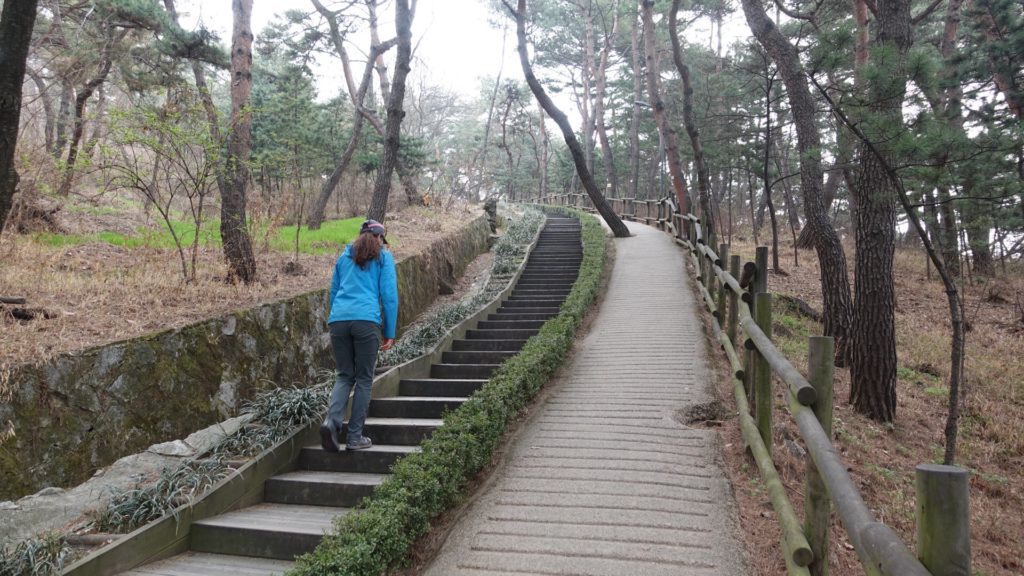From 2004 to 2010, I wasn’t very physically fit. I had finished high school, went to college, got a master’s degree, and got a job. Regular exercise just wasn’t on my radar. I would have considered myself fairly healthy, but truthfully, I wasn’t. I didn’t exercise, and while I paid attention to what I ate, I certainly could have eaten healthier. I did some overnight backpacking trips while being fairly out-of-shape (including North Manitou Island and Pictured Rocks National Lakeshore) without repercussions. However, I knew physical preparations would make an overnight hike (and day-hike, for that matter) more enjoyable.
I started practicing yoga in 2010 and started to run in 2011. I’m not sure what sparked the change, but I felt better after moving my body. Since then, I have been consistently active, becoming a certified yoga teacher and completing a couple half marathons, something I would have never considered ten years ago. These endeavors complement and prepare me for one of my favorite activities: hiking!
Guided tours with Hiawatha Hiking are geared toward beginner and intermediate hikers, with lots of breaks and very manageable mileage. Some preparation, however, will make your life easier, so we’ve included some tips below for hikes of any length.
Get moving
You don’t need to be a Boston Marathon qualifier to have a successful hike, but some movement beforehand certainly helps! A simple start is to walk around your block. On days where I am taking a break from running, I like to walk around my neighborhood; it’s amazing what you see at a slower pace. You can gradually increase the length or speed of your walks. When you’re ready, you can challenge yourself with steeper terrain, perhaps hitting the trails or walking up that big hill that once seemed daunting. Take the stairs rather than the elevator. If you have a gym membership, a stair stepper machine can be put to good use! A great way to prepare for a hike is to simply put one foot in front of the other. Of course, it is always a good idea to discuss any new exercise regimen with your doctor.
Wear your chosen hiking sneakers/boots
Once you choose your hiking footwear, start wearing those shoes on your training walks/hikes/stair step routines. Click here for advice on choosing hiking shoes. Training in your shoes is the best way to break them in (although some shoes require very little “breaking in”). You can also decide if the shoes you have picked work for your body. Maybe you need to add an insole. Perhaps the socks you were excited about when you saw them at REI don’t feel so nice. Don’t be afraid to switch up your shoes and socks. Comfort is key! The same goes for clothing. Wear your “hiking outfit” on your hikes to make sure it works for you.
Train with your loaded pack
I really started to take this notion seriously when we decided to thru-hike the Pacific Crest Trail (PCT) in 2016. We filled our backpacks with all of our gear/water and set off on local trails. Going for a day-hike will help you get a sense of your pack weight and what is manageable. On blustery winter days when hiking outside wasn’t ideal, I strapped my pack on my back and hit the treadmill at the gym. While I received strange looks and many questions, using the elevation setting on the treadmill trained my legs for the inevitable inclines on the real trail. In addition to wearing your pack on day hikes, if you can complete a one-night trip before a longer outing, you will know if the gear you have chosen is suitable.

Preparing for the PCT on a training hike in Maumee, Ohio.
Only pack what’s necessary
I have certainly trimmed down my gear since my first backpacking trip. While I still have a couple “luxury” items, I know that the lighter my pack, the easier and more enjoyable my trip will be. With less physical objects to deal with, you can focus more on the scenery and your body will feel better. While I don’t advocate cutting your toothbrush down to a nub to shred grams (more power to you if this is you!), you probably don’t need that extra pair of shoes, binoculars, or iron skillet.

It helps to lay your gear out. Scrutinize and decide what you can eliminate.
Other considerations
Unexpected physical hurdles may present themselves on a hike and emotional ups and downs can come with hikes of any length. As mentioned above, we at Hiawatha Hiking Company cater to beginner and intermediate hikers/backpackers. Trip mileage is manageable and we take lots of breaks! We do our best to prepare you for all of our tours, whether it’s a one-on-one gear/logistical discussion well before commencement of an overnight outing, or a group chat before one of our sunset-hikes. We will help you prepare as much as possible for an overnight backpacking trip to Pictured Rocks National Lakeshore or Grand Island OR a day-hike to see Chapel Rock, waterfalls, the Beaver Basin Wilderness or Hiawatha National Forest. After all preparations have been made for a successful trip, you can take unexpected situations in stride and truly experience adventure in Michigan’s Upper Peninsula!


One comment
Good article